Birdfinding.info ⇒ Endangered but it remains locally common in its tiny range. It can often be found along the eponymous Palila Forest Discovery Trail at Pu’u La’au.
Palila
Loxioides bailleui
Endemic to the Big Island of Hawaii, where it is confined to dry forest on slopes of Mauna Kea.
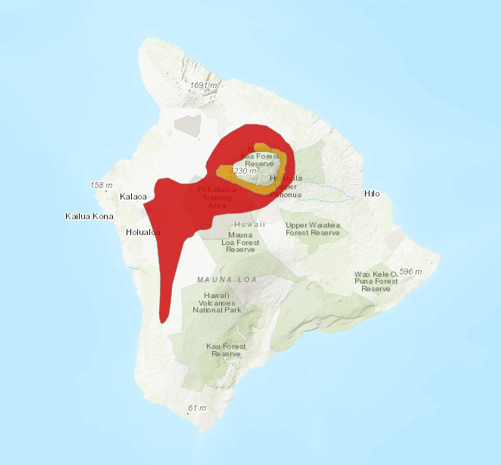
Approximate historical distribution of the Palila (current range in orange). © BirdLife International 2016
Modern distribution is a narrow elevation band around the mountain between 2,000 and 2,750 m, where its favored food tree, the māmane grows.
Formerly much more widespread, including lower elevations and other islands. Fossilized remains have been discovered on Kauai and Oahu.
Since 1980 its population levels have been closely monitored and have risen and fallen between a high of 5,685 (in 1981) to low of 1,200 (in 2010). Most of the movement in numbers has been attributed to variation in the māmane seed crop within its tiny range.
Identification
A large, husky, gray-and-yellow honeycreeper with a rounded, parrotlike bill.
Gray overall with a bright-yellow hood and yellow staining in the wings and tail.
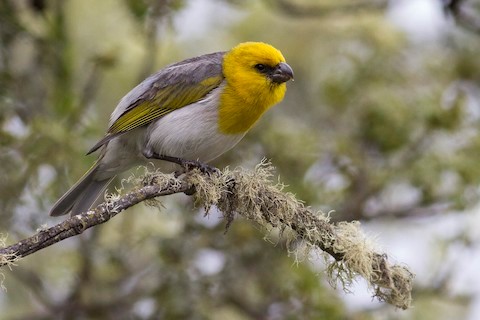
Palila, male. (Pu’u La’au, Big Island, Hawaii; July 3, 2016.) © Jacob Drucker
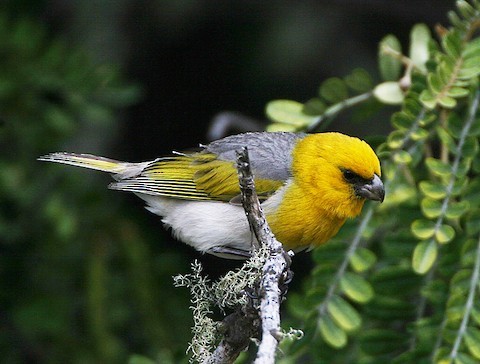
Palila, male. (Pu’u La’au, Big Island, Hawaii; May 7, 2008.) © Michael Walther
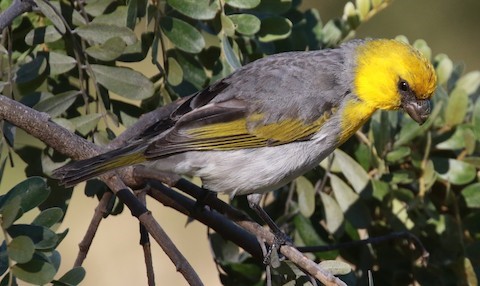
Palila, male. (Pu’u La’au, Big Island, Hawaii; July 20, 2018.) © Jordan Roderick
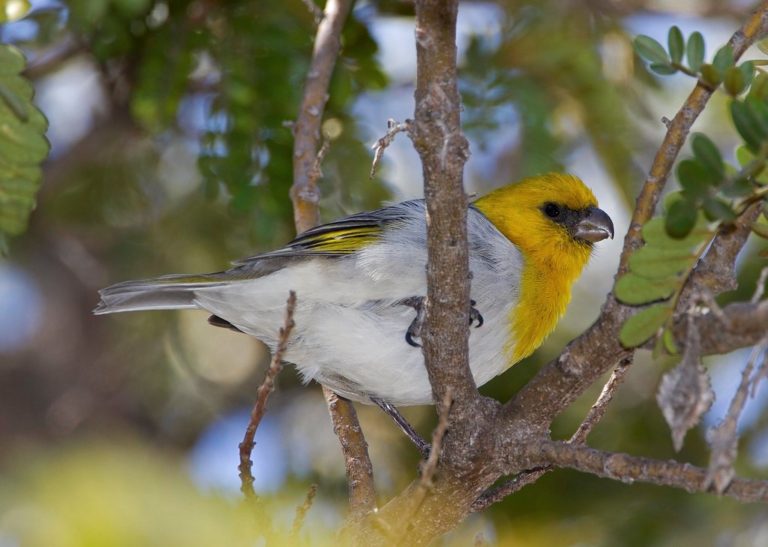
Palila, male. (Pu’u La’au, Big Island, Hawaii; October 26, 2011.) © Dan Weedman
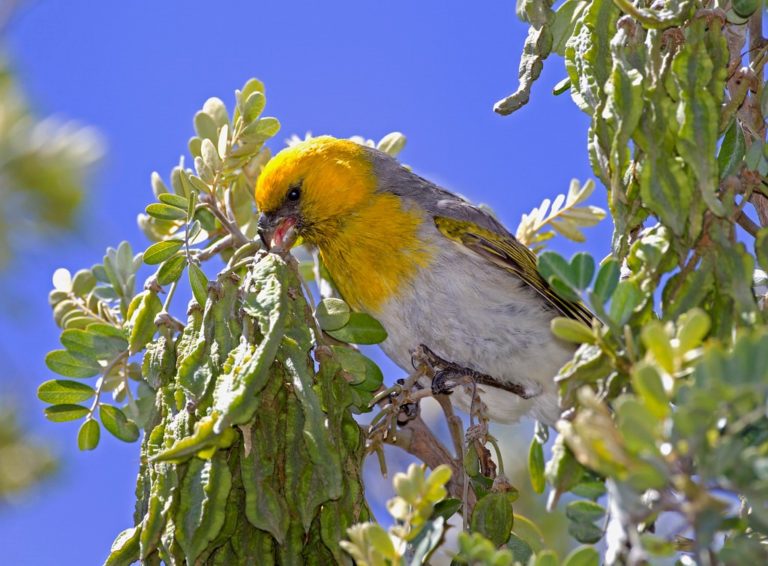
Palila, male eating māmane. (Pu’u La’au, Big Island, Hawaii; May 27, 2011.) © Dan Weedman
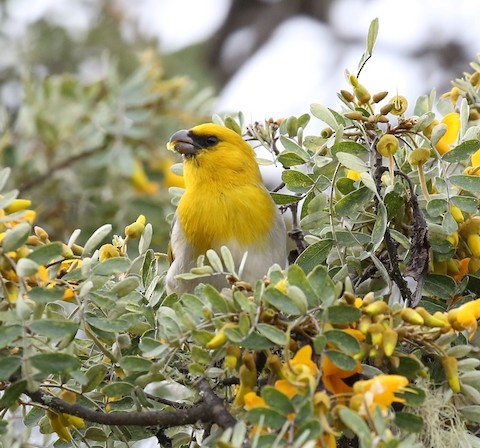
Palila, male. (Pu’u La’au, Big Island, Hawaii; November 18, 2018.) © Juan Pablo Galvan

Palila, male blending into its floral environment. (Pu’u La’au, Big Island, Hawaii; April 1, 2019.) © David Brock
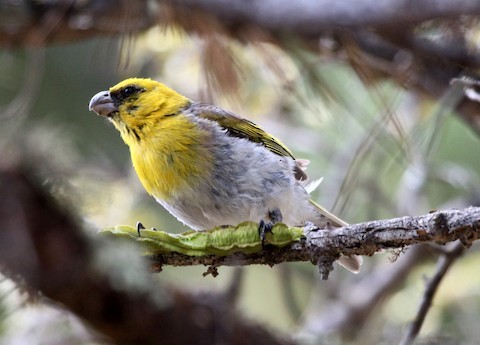
Palila, male. (Pu’u La’au, Big Island, Hawaii; September 23, 2013.) © John Drummond
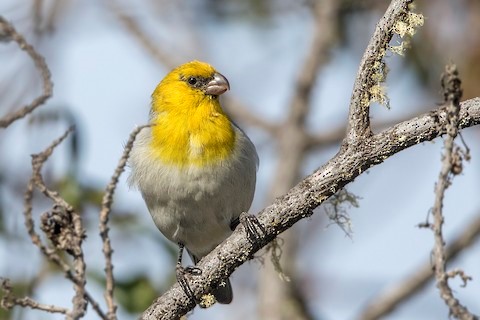
Palila. (Pu’u La’au, Big Island, Hawaii; September 12, 2018.) © Bradley Hacker
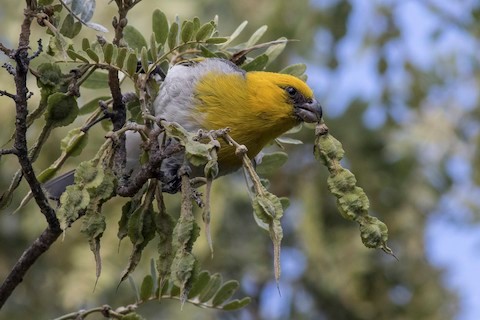
Palila. (Pu’u La’au, Big Island, Hawaii; June 19, 2019.) © Jacob Drucker
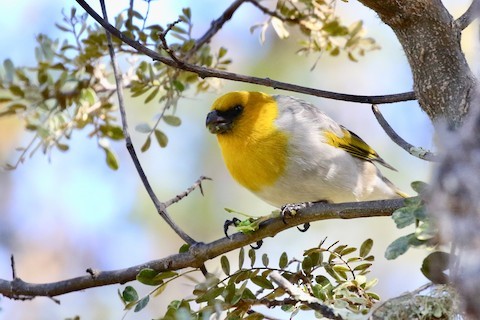
Palila, male, eating māmane. (Pu’u La’au, Big Island, Hawaii; January 25, 2020.) © Eric Gustafson
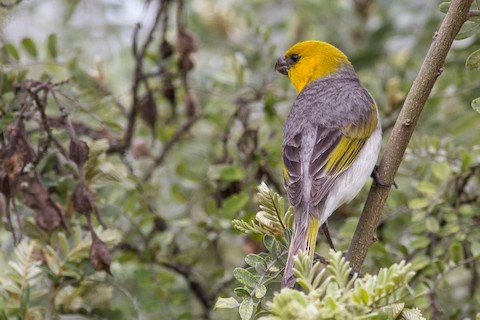
Palila, male, dorsal view. (Pu’u La’au, Big Island, Hawaii; July 3, 2016.) © Jacob Drucker
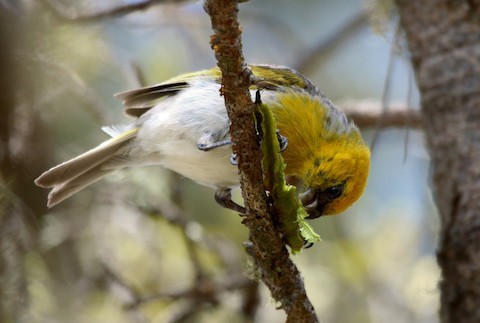
Palila, eating māmane. (Pu’u La’au, Big Island, Hawaii; September 23, 2013.) © John Drummond
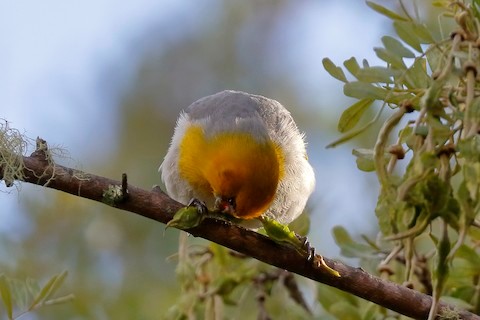
Palila, male eating māmane. (Pu’u La’au, Big Island, Hawaii; March 25, 2018.) © Sharif Uddin

Palila, male appearing especially robust. (Pu’u La’au, Big Island, Hawaii; May 7, 2008.) © Michael Walther
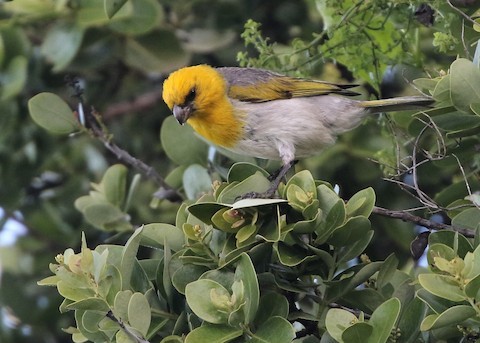
Palila, male. (Pu’u La’au, Big Island, Hawaii; September 2, 2019.) © Dean LaTray
The sexes are mostly similar, but females have less extensive yellow on the crown, much of it replaced by gray, and males have a blackish mask where females are dark-gray.
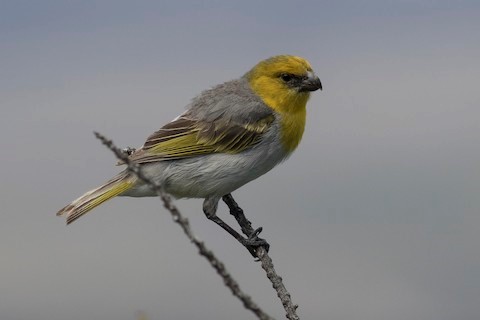
Palila, female. (Pu’u La’au, Big Island, Hawaii; June 19, 2019.) © Jacob Drucker
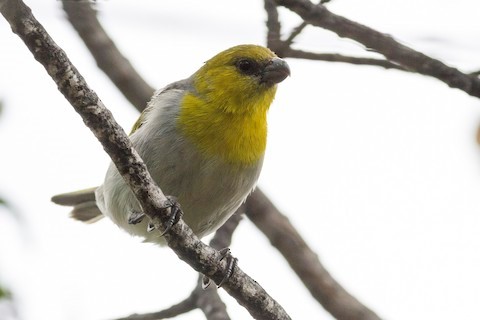
Palila, female. (Pu’u La’au, Big Island, Hawaii; July 3, 2016.) © Jacob Drucker
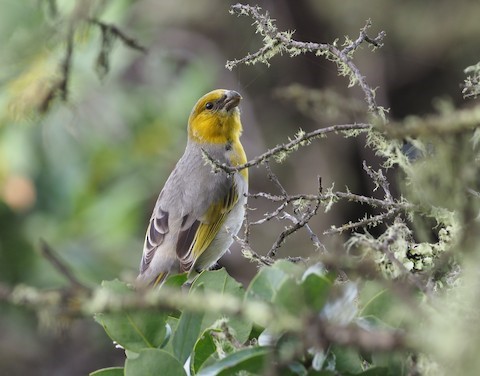
Palila, female. (Pu’u La’au, Big Island, Hawaii; October 27, 2018.) © Stephan Lorenz

Palila, female. (Pu’u La’au, Big Island, Hawaii; August 27, 2018.) © Bret Mossman
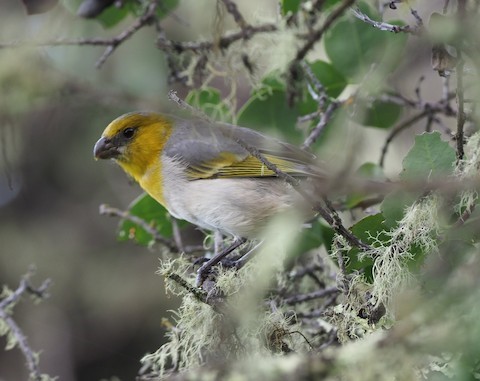
Palila, female. (Pu’u La’au, Big Island, Hawaii; October 27, 2018.) © Stephan Lorenz

Palila, in flight carrying a māmane pod. (Pu’u La’au, Big Island, Hawaii; December 7, 2016.) © Laura Keene
Notes
Monotypic species.
IUCN Red List Status: Critically Endangered.
References
BirdLife International. 2016. Loxioides bailleui. The IUCN Red List of Threatened Species 2016: e.T22720742A94680871. https://dx.doi.org/10.2305/IUCN.UK.2016-3.RLTS.T22720742A94680871.en. (Accessed May 9, 2020.)
eBird. 2020. eBird: An online database of bird distribution and abundance. Cornell Lab of Ornithology, Ithaca, N.Y. http://www.ebird.org. (Accessed May 9, 2020.)
Pratt, H.D. 2005. The Hawaiian Honeycreepers: Drepanidinae. Oxford University Press.
Pratt, H.D., E. de Juana, and E.F.J. Garcia. 2020. Palila (Loxioides bailleui). In Handbook of the Birds of the World Alive (J. del Hoyo, A. Elliott, J. Sargatal, D.A. Christie, and E. de Juana, eds.). Lynx Edicions, Barcelona. https://www.hbw.com/node/61435. (Accessed May 9, 2020.)
Pyle, R.L., and P. Pyle. 2017. The Birds of the Hawaiian Islands: Occurrence, History, Distribution, and Status. Version 2 (January 1, 2017). http://hbs.bishopmuseum.org/birds/rlp-monograph/. B.P. Bishop Museum, Honolulu, Hawaii.
Xeno-Canto. 2020. Palila – Loxioides bailleui. https://www.xeno-canto.org/species/Loxioides-bailleui. (Accessed May 9, 2020.)
